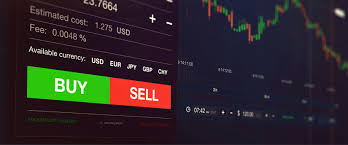
Comprehensive Guide to Forex Trading Systems
In the fast-paced world of forex trading, having a solid trading system is crucial for success. With numerous strategies and approaches available, traders are often faced with the challenge of selecting the system that best aligns with their trading goals and risk tolerance. This article delves into the various forex trading systems and highlights the best practices for leveraging them effectively. You can also explore more insights at forex trading systems fxtrading-broker.com.
Understanding Forex Trading Systems
A forex trading system is a set of rules and guidelines that traders use to determine their entry and exit points in the market. These systems can be based on technical analysis, fundamental analysis, or a combination of both. The primary goal of any trading system is to maximize profit while minimizing risk.
Types of Forex Trading Systems
1. Automated Trading Systems
Automated trading systems, also known as algorithmic or robotic trading systems, execute trades based on pre-set criteria without the need for manual intervention. These systems use complex algorithms to analyze market data and identify trading opportunities. Automated systems are popular among traders who prefer a hands-off approach to trading.
2. Manual Trading Systems
Manual trading systems require traders to make their own decisions based on market analysis and signals. This approach demands a solid understanding of technical indicators, chart patterns, and market dynamics. Manual trading systems provide traders with greater flexibility but also require more time and effort to analyze the market.
3. Scalping Systems
Scalping systems involve making multiple trades within a short period to capitalize on small price movements. Traders who adopt this strategy often rely on technical indicators and chart patterns to make quick decisions. Scalping requires quick reflexes and a disciplined mindset due to the rapid pace of trading.

4. Swing Trading Systems
Swing trading aims to capture price movements over a period of days or weeks. Traders using this system analyze short to medium-term price patterns and trends. Swing trading is less intense than scalping and allows traders to take advantage of more substantial price swings without needing constant market monitoring.
5. Trend Following Systems
Trend following systems focus on identifying and trading in the direction of the prevailing market trend. Traders leverage various technical indicators, such as moving averages and the Relative Strength Index (RSI), to confirm trends and make informed decisions. This approach can be beneficial in trending markets but may lead to losses during consolidating or reversing markets.
Choosing the Right Forex Trading System
When selecting a forex trading system, it’s crucial to consider personal trading styles and individual preferences. Factors such as time availability, risk tolerance, and trading objectives play a significant role in the decision-making process. Here are some tips for choosing the right system:
- Define Your Trading Goals: Understand your objectives, whether seeking long-term growth or short-term gains.
- Assess Your Risk Tolerance: Determine how much capital you are willing to risk on each trade and overall exposure.
- Evaluate Time Commitment: Consider how much time you can devote to market analysis and trading.
- Backtest Your Strategy: Use historical data to test the effectiveness of the system before trading with real money.
- Stay Updated on Market Conditions: Keep informed about global economic events and news that can impact currency values.
Implementing Your Forex Trading System
Once you’ve selected a forex trading system, the next step is implementation. Here are some best practices for effectively applying your chosen system:
- Start with a Demo Account: Utilize a demo trading account to practice your strategy without risking real money. This helps to build confidence and understanding of the system.
- Manage Your Capital Wisely: Implement strict money management rules to safeguard your trading capital. This includes setting stop-loss and take-profit levels for each trade.
- Keep a Trading Journal: Record your trades, strategies employed, and outcomes. Analyzing your performance helps identify strengths and areas for improvement.
- Be Adaptable: The forex market is dynamic. Be prepared to adjust your strategy and adapt to changing market conditions.
- Continue Learning: Stay committed to improving your trading knowledge and skills. Participate in webinars, read books, and follow reputable trading resources.
Common Pitfalls to Avoid
Even with a robust trading system, traders can fall victim to common mistakes. Here are some pitfalls to be aware of:
- Overtrading: Avoid the temptation to trade excessively. This can lead to emotional decision-making and substantial losses.
- Neglecting Risk Management: Always prioritize risk management. Failing to set stop-losses can result in significant capital drawdowns.
- Following the Crowd: Avoid making decisions based solely on market sentiment or popular opinion. Trust your analysis and system.
- Being Impatient: Trading is a long-term endeavor. Be patient and stick to your strategy, even during periods of drawdown.
- Ignoring Market Analysis: Regularly review market conditions and adjust your strategy based on the latest economic indicators and news releases.
Conclusion
Forex trading systems are invaluable tools that can help traders navigate the complexities of the currency markets. By selecting the right system and implementing it effectively, traders can enhance their chances of success. Remember that consistency, discipline, and ongoing education are key components of a successful trading journey. As you embark on your trading career, keep these principles in mind, and stay focused on your goals!


コメント